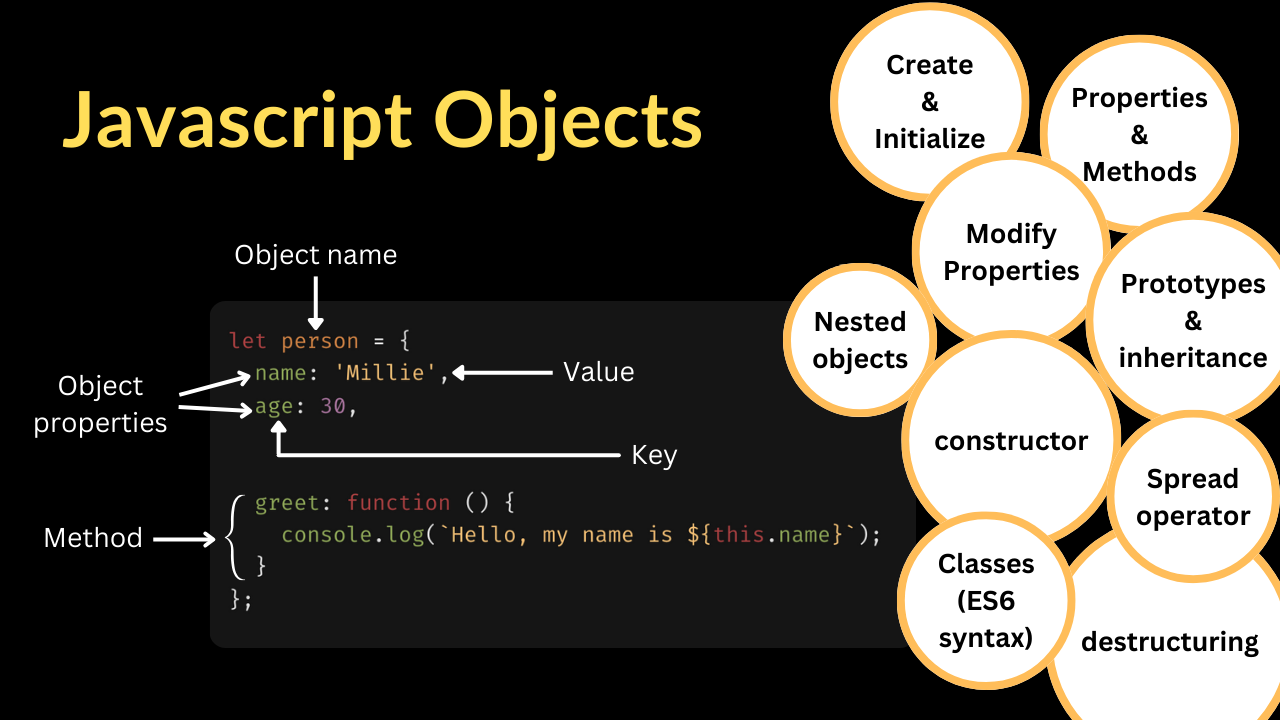How to Work with Objects in JavaScript: A Comprehensive Guide

Understanding Objects in JavaScript
JavaScript, a dynamic language, relies heavily on objects. They are essentially collections of key-value pairs, where the keys are strings and the values can be of any data type. Objects provide a flexible way to structure and organize data, making them fundamental to building complex applications.
Creating Objects
There are multiple ways to create objects in JavaScript:
1. Object Literals
This is the most common method to create simple objects:
const person = {
firstName: "John",
lastName: "Doe",
age: 30,
city: "New York"
};
2. Constructor Functions
For creating multiple objects with similar properties, constructor functions are useful:
function Person(firstName, lastName, age, city) {
this.firstName = firstName;
this.lastName = lastName;
this.age = age;
this.city = city;
}
const person1 = new Person("Jane", "Smith", 25, "Los Angeles");
const person2 = new Person("Michael", "Johnson", 35, "Chicago");
3. The Object Constructor
While less common, you can use the Object constructor:
const person = new Object();
person.firstName = "Alice";
person.lastName = "Williams";
Accessing Object Properties
You can access object properties using two primary methods:
1. Dot Notation
console.log(person.firstName); // Output: John
2. Bracket Notation
console.log(person["lastName"]); // Output: Doe
Bracket notation is especially useful when property names are dynamic or contain special characters.
Adding and Removing Properties
You can dynamically add or remove properties from objects:
person.occupation = "Engineer"; // Adding a property
delete person.city; // Removing a property
Nesting Objects
Objects can contain other objects:
const address = {
street: "123 Main St",
city: "Anytown",
state: "CA",
zipCode: "12345"
};
const person = {
firstName: "John",
lastName: "Doe",
age: 30,
address: address
};
Methods in Objects
Objects can contain functions, called methods:
const person = {
firstName: "John",
lastName: "Doe",
age: 30,
greet: function() {
console.log("Hello, my name is " + this.firstName + " " + this.lastName);
}
};
person.greet(); // Output: Hello, my name is John Doe
Object Iteration
You can iterate through object properties using different methods:
1. for...in loop
for (let key in person) {
console.log(key + ": " + person[key]);
}
2. Object.keys() and Object.values()
const keys = Object.keys(person);
const values = Object.values(person);
Cloning Objects
To create a copy of an object, use the spread operator or Object.assign():
const personCopy = {...person};
// or
const personCopy = Object.assign({}, person);
Object Comparison
Comparing objects using == or === compares references, not values. To compare object contents, you need to compare properties individually or use libraries like Lodash.
Important Considerations
- Mutability: Objects are mutable, meaning their properties can be changed after creation.
- Pass by Reference: When passing objects as arguments to functions, they are passed by reference, so changes within the function affect the original object.
- Prototype Chain: Objects inherit properties from their prototype. Understanding the prototype chain is crucial for advanced object-oriented programming.
- Performance: Be mindful of object creation and manipulation, as they can impact performance, especially in large-scale applications.
Additional Topics
- Object-Oriented Programming (OOP) concepts in JavaScript
- Classes and constructors
- Prototypes and inheritance
- Destructuring assignment
- Advanced object manipulation techniques
By mastering these fundamentals, you’ll be well-equipped to work with objects effectively in your JavaScript projects.




